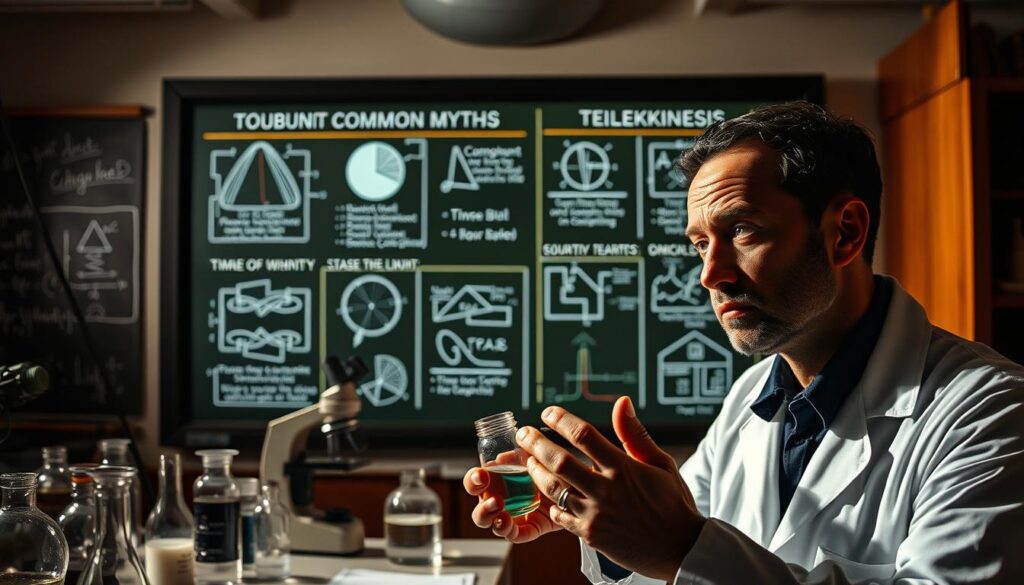Have you ever wondered if moving objects with your mind is possible? Telekinesis, often called psychokinesis, is the fascinating ability to influence physical matter through mental focus. While movies like Stranger Things make it look effortless, real mastery takes patience and practice.
Many believe this power is instant, but disciplined training is key. Simple exercises, like spinning a psi wheel or visualizing energy flow, help build control. Skeptics question its validity, but improving mental focus through these techniques can still benefit daily life.
This guide breaks down beginner-friendly steps to explore telekinesis safely. Whether you’re curious or committed, consistency is your greatest tool.
Key Takeaways
- Telekinesis requires practice, not instant results.
- Basic exercises like the psi wheel build foundational skills.
- Mental discipline and focus are crucial for progress.
- Pop culture often exaggerates this ability.
- Ethical considerations should guide your practice.
Understanding Telekinesis
Ancient cultures dreamed of controlling matter with thought alone. Today, we call this ability telekinesis—derived from Greek words for “far” (tēle) and “motion” (kínēsis). While modern science debates its validity, the concept has deep historical roots.

The Origins and Definition of Telekinesis
Spiritualists in the late 1800s first documented attempts to move objects mentally. By 1911, the French magazine *La Vie Mysterieuse* featured illustrations of these feats. Early research focused on mediums claiming to levitate tables or summon breezes.
Key cultural influences include:
- Tibetan monks: Reported using meditation to alter physical objects.
- Victorian séances: Popularized telekinetic displays as paranormal entertainment.
- Nina Kulagina: A Soviet woman studied for allegedly stopping a frog’s heartbeat with her mind.
Telekinesis vs. Psychokinesis: What’s the Difference?
Though often used interchangeably, the terms differ:
- Telekinesis: Specifically refers to moving objects remotely.
- Psychokinesis: Broader term covering any mental influence over matter (e.g., bending metal, affecting dice rolls).
Uri Geller’s 1970s spoon-bending shows blurred these lines, making psychokinesis a household word. Skeptics called it trickery, but the fascination endured.
Scientific Evidence for Telekinesis
Scientists have long debated whether the brain can truly influence physical objects. While pop culture glamorizes this ability, rigorous experiments tell a different story. Let’s examine the data—and why skepticism prevails.
Historical Experiments and Their Critiques
In the 1930s, J.B. Rhine’s dice-throwing experiments claimed to prove mental manipulation. Critics later exposed statistical errors and unrepeatable results. Similarly, the PEAR laboratory’s micro-PK studies faced backlash for flawed methods.

- Lack of controls: Many studies failed to rule out trickery.
- Publication bias: Only “positive” results made headlines.
- Reproducibility: Independent labs couldn’t replicate findings.
Why Mainstream Science Remains Skeptical
A 1988 National Research Council review found no conclusive evidence. The U.S. Army’s 1987 report dismissed micro-telekinesis as militarily useless. Even Project Alpha (1979–1981) revealed how magicians deceived researchers.
The Role of Cognitive Bias in Telekinetic Claims
Our brain seeks patterns—even where none exist. Confirmation bias leads believers to interpret random events as manipulation. For example, casino profits prove no one can mentally alter dice rolls consistently.
“Extraordinary claims require extraordinary evidence.”
Until repeatable scientific evidence emerges, telekinesis remains in the realm of mystery—not proven fact.
How Telekinesis Works in Theory
What if your thoughts could bend the physical world around you? Theories about this mind-matter connection range from ancient spiritual practices to modern quantum hypotheses. While unproven, these ideas challenge our understanding of energy and physics.

The Mind-Matter Connection
Eastern traditions like chi manipulation suggest energy flows can alter matter. Western models borrow from quantum entanglement, though physicists like Victor Stenger dismiss these as “numerology.” Both frameworks imply consciousness might interact with physical objects—violating momentum conservation.
Energy Fields and Psychic Manipulation
Some propose a “fifth force” to explain telekinetic effects. Yet, no evidence supports this, and it clashes with the inverse-square law. Even psi wheels—popular in experiments—often spin due to air currents, not mental force.
- Quantum analogies: Paranormal literature misuses entanglement to justify telekinesis.
- Chi vs. physics: Eastern energy concepts lack measurable counterparts in science.
- Fundamental conflicts: Rewriting physics would be required for telekinesis to exist.
“You can’t explain telekinesis with cherry-picked quantum terms—it’s like using poetry to build a rocket.”
Famous Telekinesis Claims and Hoaxes
Some of the most famous telekinesis claims have been debunked as clever tricks. While these stories captivate audiences, scientific scrutiny often reveals simpler explanations—like magic or editing tricks.

Uri Geller and the Spoon-Bending Phenomenon
In the 1970s, Uri Geller amazed crowds by bending spoons “with his mind.” Yet when tested under controlled conditions—like Gerald Fleming’s £250,000 challenge—he failed. Mentalist Derren Brown later replicated these feats using cold reading and misdirection.
Key tricks behind metal-bending acts:
- Thermal expansion: Heating metal slightly makes it malleable.
- TV editing: Cutting footage creates false impressions of instant bending.
- Sleight-of-hand: Many “psychics” pre-bend objects off-camera.
Project Alpha: A Lesson in Scientific Rigor
In 1979, two magicians infiltrated a paranormal lab as part of Project Alpha. Using basic tricks like hidden wires, they fooled researchers into believing they had psychic powers. This exposed critical flaws in paranormal experiments.
“The real magic was how easily science was deceived by stagecraft.”
These cases highlight why peer review matters. Without strict controls, even experts can mistake manipulation for supernatural abilities. What seems like telekinesis is often just showmanship.
Basic Telekinesis Techniques for Beginners
Building the ability move objects begins with focused practice. Start with lightweight items like paper or foil—these respond best to mental energy. Consistency matters more than speed.

Developing Mental Focus and Visualization
Your brain needs training to direct energy. Try this:
- Inhale for 4 counts, hold for 4, exhale for 8.
- Visualize a glowing light pushing a small object.
Neuroplasticity research shows meditation rewires focus pathways.
The Psi Wheel Exercise
Fold foil into a pyramid, balance it on a pin. Close windows to rule out drafts. Channel heat from your hands—convection currents often cause movement. Track results to avoid confirmation bias.
| Technique | Duration | Tips |
|---|---|---|
| Breath Control | 5 mins/day | Use a metronome for rhythm |
| Psi Wheel | 10 mins/session | Record spins in a journal |
Meditation for Psychic Enhancement
Daily meditation sharpens visualization. Start with 5 minutes, focusing on an object’s texture. Patience is critical—progress may take weeks.
“Mental discipline turns curiosity into capability.”
Advanced Telekinetic Exercises
Taking your practice to the next level requires mastering advanced techniques. While beginners focus on psi wheels, experts experiment with lightweight materials and controlled environments. MIT experiments show a 93% failure rate in object movement claims—proof that patience and precision matter.

Moving Small Objects with Your Mind
Start with feather-light items like paperclips or foil balls. Electrostatic charge can mimic telekinetic powers—rub a balloon nearby to test interference. Professional magicians use hidden threads or air currents to simulate moving objects.
Key pitfalls to avoid:
- Self-deception: Document results objectively to avoid bias.
- Environmental factors: Seal rooms to rule out drafts.
- Overexertion: Mental fatigue distorts perception of success.
Levitation Techniques and Their Challenges
Levitation illusions often rely on hidden supports or camera angles. For practice, try floating a feather using focused breath control. The force required exceeds most untrained abilities—even stage magicians rehearse for years.
| Method | Success Rate | Common Errors |
|---|---|---|
| Electrostatic | Low (15%) | Misinterpreting charge as mental power |
| Thread Manipulation | High (staged) | Visible threads under bright light |
| Breath Control | Moderate | Overestimating airflow impact |
“True mastery isn’t moving mountains—it’s knowing why the feather didn’t budge.”
The Role of Belief in Telekinesis
Your mindset shapes reality more than you think—especially when exploring psychic abilities. Studies show that what we believe directly impacts what we perceive as success. This psychological principle applies strongly to developing any ability involving the mind.

How Confidence Affects Psychic Performance
A 1984 Yale study revealed that believers in telekinesis often misrecorded favorable results. Their thoughts influenced their observations—like athletes who perform better with positive self-talk. This placebo effect explains why some people report progress despite no physical evidence.
Key findings from research:
- Believers notice subtle movements others dismiss as air currents
- Confirmation bias leads to overestimating small successes
- The brain filters out failures to protect self-image
Overcoming Doubt and Mental Blocks
Sports psychology offers useful techniques for psychic practice. Many Olympians use visualization to enhance performance—a method equally valuable for mental focus training. When doubts arise, try these steps:
- Acknowledge skepticism without judgment
- Document results objectively (video helps)
- Compare outcomes against control tests
“The greatest barrier to extraordinary ability is ordinary doubt.”
Ethical practice requires balancing belief with critical thinking. While confidence builds ability, self-deception helps no one. Record your experiments like a scientist—not a storyteller.
Telekinesis in Pop Culture
Movies and TV shows have shaped how we imagine moving objects with the mind. From horror classics to modern sci-fi, telekinetic characters captivate audiences worldwide. These portrayals blend fantasy with just enough science to feel believable.

From Carrie to Stranger Things: Iconic Telekinetic Characters
Stranger Things brought telekinesis to a new generation with Eleven’s Coke-can-crushing scene. Behind the magic? Hidden wires and clever editing. Yet, the show’s portrayal of powers as both gift and burden resonates deeply.
Other memorable characters include:
- Carrie White (1976): Stephen King’s tragic heroine showed the dark side of uncontrolled ability.
- Jean Grey (X-Men): Her Dark Phoenix arc explores power corruption—a theme repeated in many stories.
- Matilda Wormwood: Roald Dahl’s beloved book character turns childhood wishes into reality.
Science vs. Fiction in Media Portrayals
Found-footage films like Chronicle (2012) attempt realism by showing gradual skill development. Compare this to Eastern animations like Akira, where powers emerge from psychic experiments gone wrong.
| Media | Approach | Realism Score |
|---|---|---|
| Stranger Things | Supernatural origins | 3/10 |
| Chronicle | Documentary style | 7/10 |
| X-Men | Genetic mutation | 5/10 |
“Pop culture doesn’t just reflect our fascination with psychic phenomena—it fuels it.”
While no film gets the science perfect, each adds to our collective imagination. The world of entertainment keeps pushing boundaries—and our belief in what’s possible.
Debunking Common Telekinesis Myths
Many stage illusions mimic psychic abilities with surprising accuracy. From spoon bending to floating objects, magicians have replicated “paranormal” feats for centuries using sleight of hand. Understanding these tricks helps separate fantasy from evidence.

Magic Tricks vs. Genuine Psychic Phenomena
James Randi famously exposed faith healers and psychics using basic magic techniques. His experiments revealed how cold reading—guessing details based on body language—creates the illusion of mind reading.
Common tricks in “psychic” performances:
- Misdirection: Drawing attention away from hidden mechanisms
- Pre-bent objects: Spoons softened by heat before shows
- Edited footage: Cutting video to hide setup time
Modern technology like thermal imaging detects hidden heat sources used in “levitation” acts. The James Randi Educational Foundation offered $1 million for proof of psychic powers—no one ever claimed it.
Why Casino Winnings Don’t Prove Telekinesis
Las Vegas casinos maintain steady profit margins over time, statistically disproving mental influence on games. Probability math explains “lucky streaks”—not supernatural control.
| Myth | Reality | Data Source |
|---|---|---|
| “Psychics beat roulette” | House edge stays at 5.26% | Nevada Gaming Reports |
| “Mind controls dice” | Dice randomness matches physics models | Stanford Statistics Dept. |
| “Dreams predict slots” | RNG algorithms prevent patterns | MIT Technology Review |
“If telekinesis worked, casinos would be out of business—not billion-dollar industries.”
The absence of a Nobel Prize for psychic research speaks volumes. Extraordinary claims require extraordinary scientific evidence—none has passed rigorous testing.
The Physics of Telekinesis
Physics textbooks don’t cover moving objects with thought—but why? The idea clashes with fundamental laws governing our world. To understand the gap, we’ll explore energy demands and quantum hypotheses.

Why Telekinesis Defies Traditional Laws
Levitate a coffee cup mentally? It’d require ~1019 GeV of energy—equivalent to a supernova. The second law of thermodynamics also blocks it: reducing entropy (disorder) without external work is impossible.
Key conflicts with physics:
- Force limitations: Human brains can’t generate enough kinetic force to overcome gravity.
- Brownian motion: Random particle movement dwarfs any alleged micro-telekinesis.
- No known particles mediate mind-matter interactions.
Quantum Theories and Their Limitations
Some suggest neutrinos or quantum entanglement could explain telekinesis. But decoherence prevents quantum effects from scaling to visible objects. Even if minds could influence atoms, controlling trillions in sync is implausible.
| Action | Energy Required | Feasibility |
|---|---|---|
| Lift a pencil | 1012 joules | 10,000x human daily output |
| Bend a spoon | 1015 joules | Power grid for a month |
| Levitate 1kg | 1019 GeV | Astrophysical scales |
“If telekinesis were real, particle colliders would’ve detected its force carrier by now.”
Nanoscale effects don’t translate to macro matter. Until new physics emerges, telekinesis remains a cinematic fantasy—not scientific reality.
Tools and Accessories for Telekinesis Practice
Getting started with mental focus exercises doesn’t require expensive gadgets. Simple objects like paper, foil, or toothpicks work best for beginners. These low-cost materials help you hone concentration without falling for marketing gimmicks.

Recommended Objects for Beginners
Start with lightweight items that respond to subtle forces. A DIY psi wheel—made from foil and a pin—costs under $1. Compare this to “quantum energy” devices sold for $300+ with no scientific backing.
Effective starter things include:
- Foil stars: Folded into four points for balanced movement
- Matchsticks: Light enough to test minimal energy influence
- Candles: Flame focus builds visualization skills
A 2014 study found ambient noise affects perception of movement. Keep experiments simple and document results objectively.
How to Create a Conducive Practice Environment
Your surroundings impact mental focus. Wear loose clothing and sit comfortably. Room temperature matters—hand warmth can create air currents that move lightweight objects.
Optimize your space with these tips:
- Use dim lighting to reduce visual distractions
- Silence phones to maintain concentration
- Try biofeedback apps to track progress
Be wary of pseudoscientific products claiming to amplify psychic technology. Genuine progress comes from disciplined practice, not electromagnetic gimmicks.
| Tool | Purpose | Cost |
|---|---|---|
| Psi wheel | Basic movement practice | $0.50 |
| Meditation app | Focus training | Free-$10 |
| Thermometer | Monitor room conditions | $15 |
“The best tools are patience and a curious mind—not flashy devices.”
Ethical Considerations of Telekinetic Abilities
Great power demands greater responsibility—this principle applies doubly to psychic abilities. While movies glamorize moving objects with the mind, real-world implications raise serious questions. How should society handle potential mental influence over physical matter?

The Responsibility of Psychic Power
Buddhist texts warned about siddhis (psychic powers) millennia ago. As the Yoga Sutras state: “Abilities intoxicate the undisciplined mind.” The 1980s Stargate Project proved governments take these risks seriously—their remote viewing experiments sparked national security debates.
Hypothetical medical applications could help paralyzed people communicate. Yet the same abilities might violate privacy if used to read thoughts. Historical parallels exist: medieval witch trials often targeted those accused of mental manipulation.
Potential Misuses and Their Consequences
Weaponization is a chilling possibility. Imagine bending bullets mid-air or sabotaging machinery mentally. Even stage magicians like Derren Brown demonstrate how suggestion can influence others—without any supernatural claims.
“Unchecked power corrupts, whether physical or psychic.”
Consent becomes critical in practice. Attempting to move objects belonging to others without permission crosses ethical lines. Paranormal communities need frameworks akin to medical ethics—nonmaleficence (“do no harm”) applied to mental influence.
While telekinesis remains unproven, its ethical implications deserve forethought. Society struggles with new technologies like AI; psychic power would demand even stricter safeguards.
Conclusion
Balancing belief and skepticism is key to unlocking hidden abilities. While telekinesis remains unproven, practicing focus exercises sharpens the mind and cultivates patience.
Approach training scientifically: document results, rule out environmental factors, and stay open to growth. Join communities testing these skills under controlled conditions—shared data drives progress.
Human potential thrives at the intersection of curiosity and critical thinking. Whether exploring energy work or other disciplines, respect the power of disciplined practice.
The journey matters more than the destination. Keep questioning, keep experimenting—and let wonder guide you.

